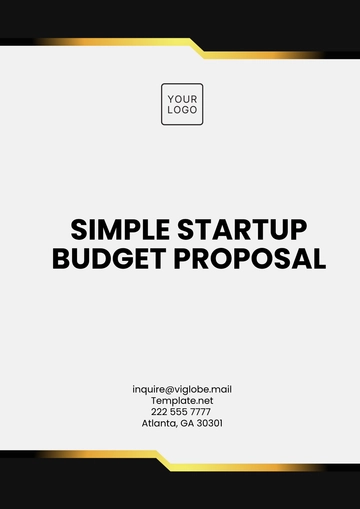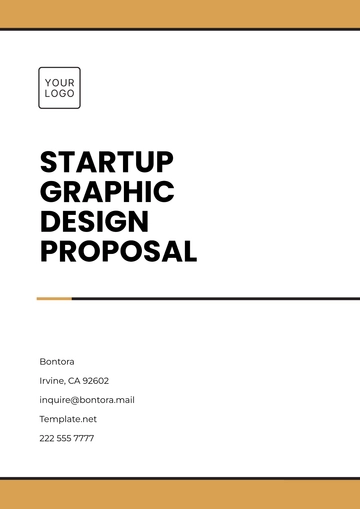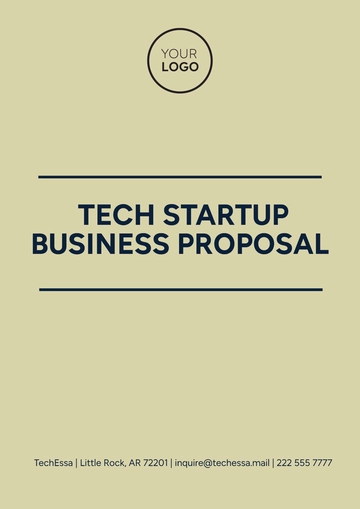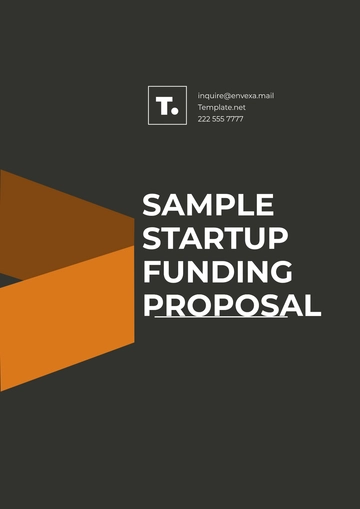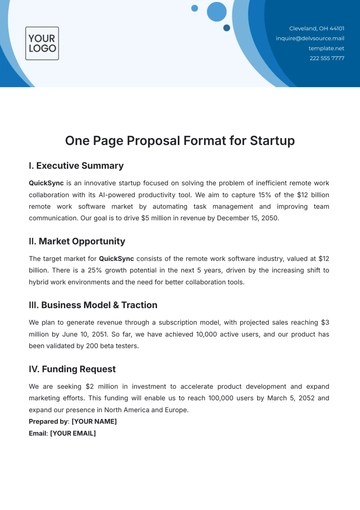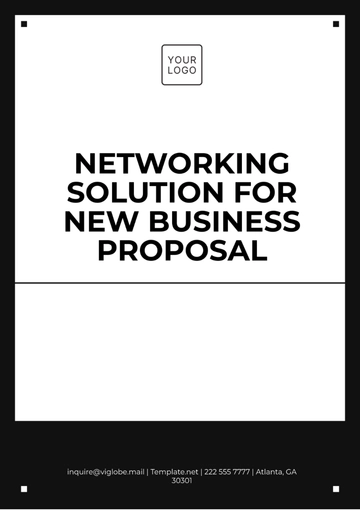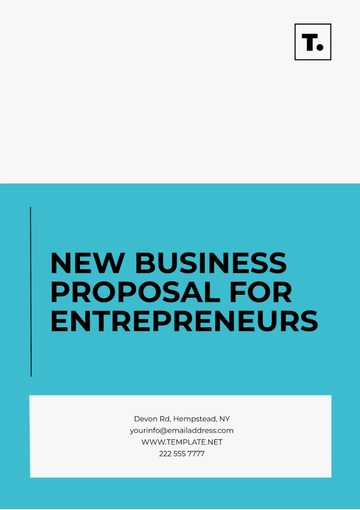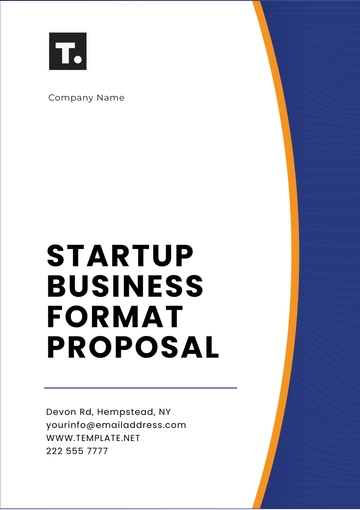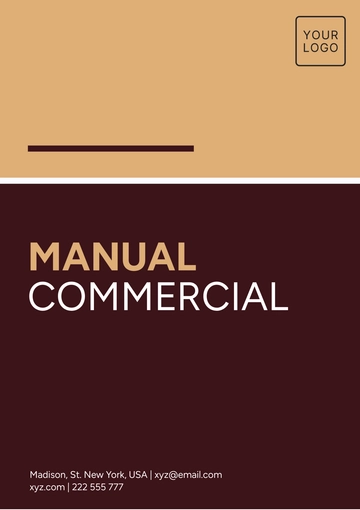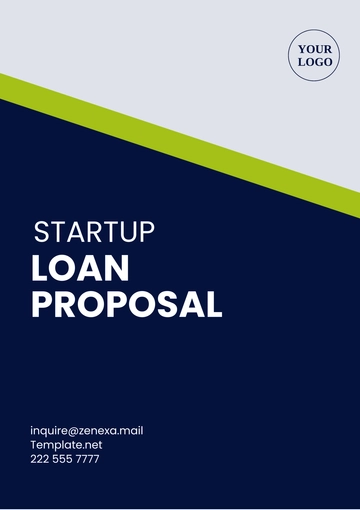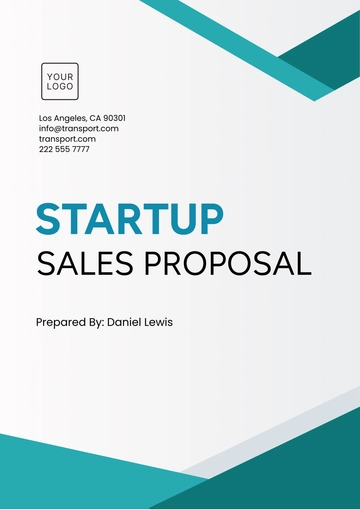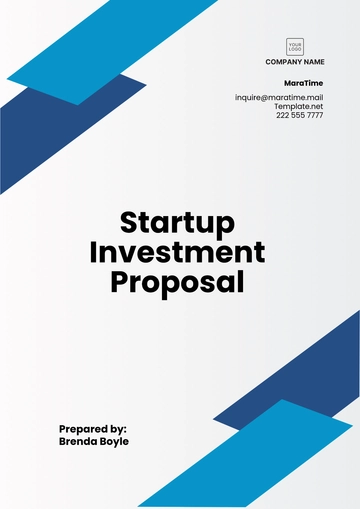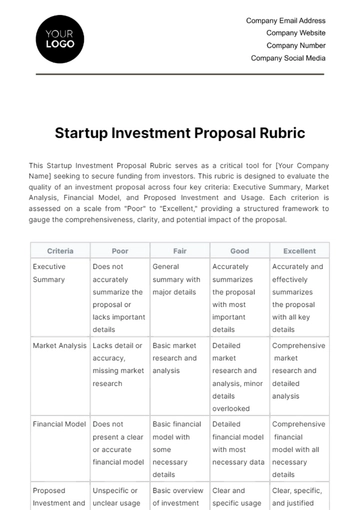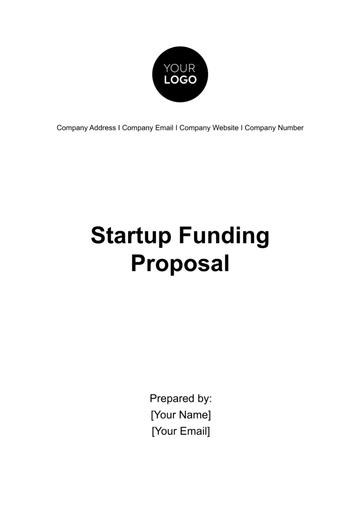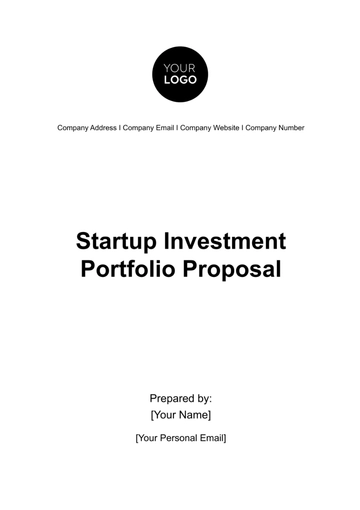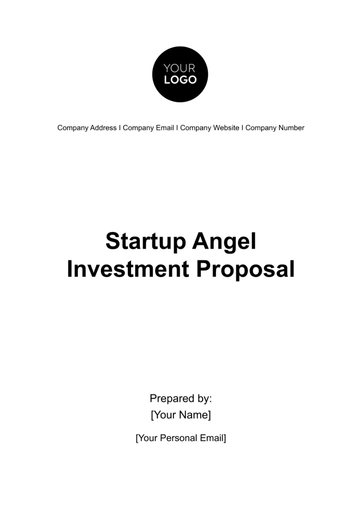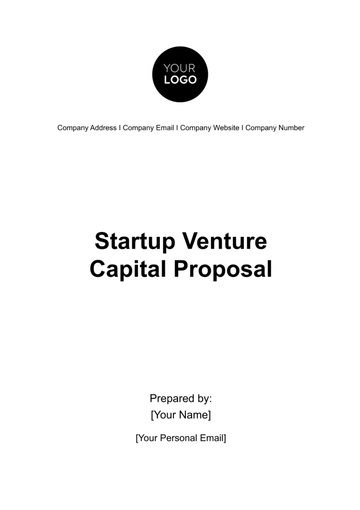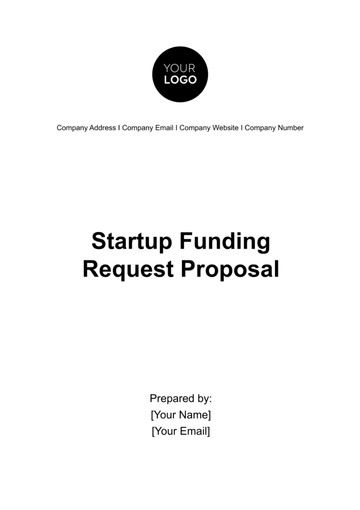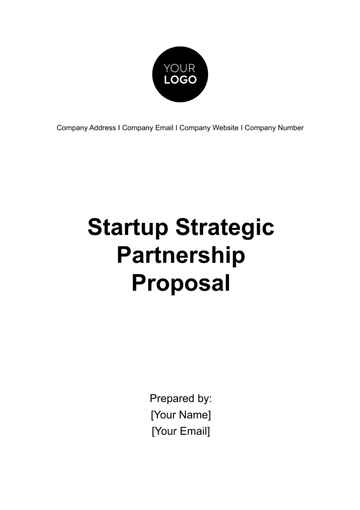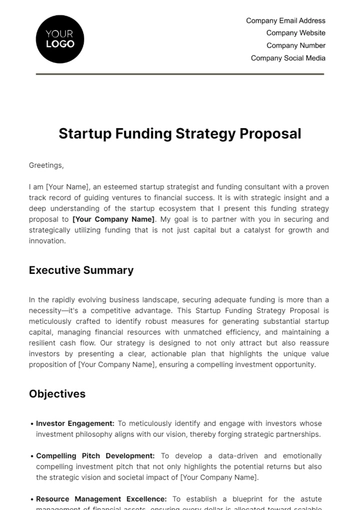Free Startup Funding Proposal Manual
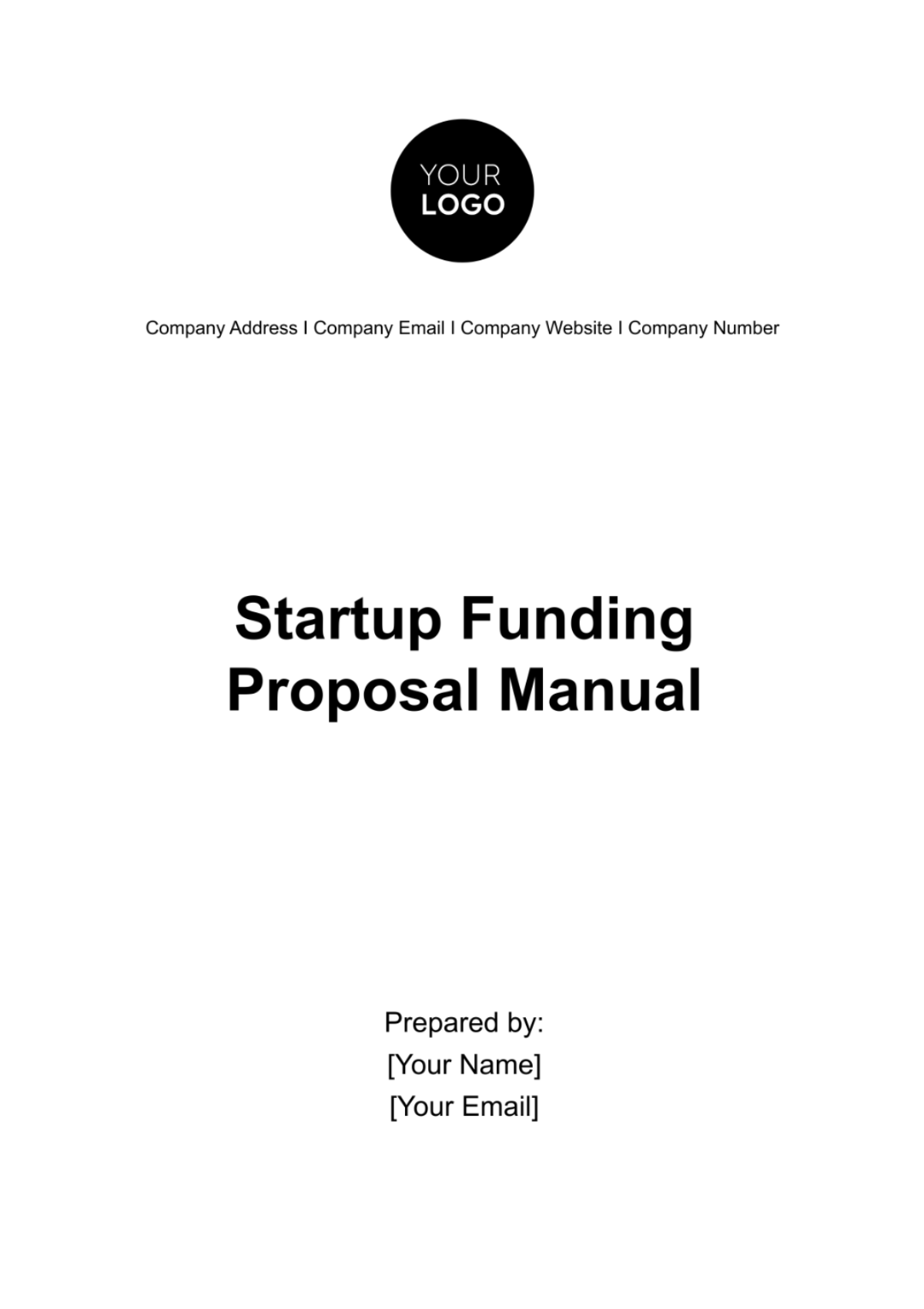
Introduction
The Startup Funding Proposal Manual is designed to guide you through the process of creating a comprehensive and compelling funding proposal to attract investors and secure financing for your startup venture. Whether you're seeking seed funding, venture capital, or other forms of investment, this manual will provide you with the essential tools and insights to craft a winning proposal.
Understanding Startup Funding
Before delving into the intricate process of crafting your funding proposal, it is essential to grasp the fundamental purpose and components inherent in such documents.
Key Points:
Clarity in Business Concept: A funding proposal serves as a platform to articulate the core business concept with precision. By elucidating the problem your venture aims to solve or the market opportunity it seeks to capitalize on, you provide investors with a clear understanding of the value proposition.
Financial Projections for Strategic Insight: Detailed financial projections are a cornerstone of the funding proposal, offering strategic insights into the anticipated growth trajectory and revenue generation potential of the business. These projections not only demonstrate foresight but also provide investors with a tangible framework for assessing potential returns on investment.
Transparent Funding Requirements: Explicitly outlining the funding requirements necessary to achieve business objectives is crucial. Transparency in this aspect allows investors to assess the financial commitments required and align them with their investment criteria and risk appetite.
Evaluation Metric for Investment: The funding proposal serves as a critical evaluation metric for investors. It provides them with the necessary information to gauge the feasibility and profitability of investing in your venture. A well-crafted proposal not only presents data but also conveys confidence in the potential for success.
Building Investor Confidence: Ultimately, a comprehensive and structured funding proposal plays a pivotal role in building investor confidence. By presenting a compelling narrative backed by thorough analysis, entrepreneurs can instill trust and enthusiasm in potential investors, paving the way for successful fundraising endeavors.
Understanding these key components of funding proposals is foundational to crafting a compelling narrative that resonates with investors. With a clear grasp of these principles, entrepreneurs can approach the task of drafting their proposals with confidence and purpose, maximizing their chances of securing the necessary funding for their ventures.
Getting Started: Your Business Model
Before diving into the proposal, it's crucial to thoroughly understand and articulate your startup's business model. This foundational understanding will serve as the cornerstone of your proposal, providing potential investors with a clear insight into your startup's value proposition and potential for success. Here are key points to consider:
Problem Statement: Begin by clearly identifying the specific market gap or pain point that your startup aims to address. Articulate the problem with precision, highlighting its significance and the potential impact on your target market. Illustrate your understanding of the market dynamics and the compelling need for your solution.
Solution: Describe in detail how your startup plans to effectively address the identified problem. Highlight the innovative approach or unique value proposition that sets your solution apart from existing alternatives. Emphasize how your solution aligns with market needs and consumer preferences, showcasing its potential to deliver tangible benefits and value to your target audience.
Target Market: Define the specific demographics, segments, or industries that will benefit most from your product or service. Provide insights into the characteristics, behaviors, and preferences of your target market, demonstrating a deep understanding of their needs and pain points. Clearly articulate how your solution meets the demands of your target audience and solves their problems more effectively than existing alternatives.
Revenue Streams: Outline the various avenues through which your startup plans to generate revenue and sustain profitability. Describe your monetization strategy, including pricing models, subscription plans, licensing fees, or other revenue-generating mechanisms. Provide projections for revenue growth and scalability, demonstrating the long-term financial viability of your business model.
Competitive Advantage: Identify and articulate the key factors that differentiate your startup from existing competitors in the market. Highlight your unique strengths, whether it's proprietary technology, innovative features, strategic partnerships, or superior customer experience. Showcase how your competitive advantage positions your startup for success and mitigates potential risks, making it an attractive investment opportunity for potential investors.
Understanding and effectively communicating these key aspects of your business model are essential for crafting a compelling proposal that resonates with investors. By providing a clear and comprehensive overview of your startup's value proposition, market opportunity, and growth potential, you can instill confidence and enthusiasm in potential investors, paving the way for successful fundraising endeavors.
Proposal Structure
Crafting a compelling and effective Startup Funding Proposal requires a clear, concise, and engaging structure. Here's a recommended framework:
Executive Summary: Provide a succinct overview of your startup, outlining the problem it solves and the innovative solution it offers. Concisely convey the value proposition and potential impact of your venture.
Company Description: Dive deeper into your startup's background, vision, and mission. Articulate the core values driving your business and the overarching goals you aim to achieve.
Market Analysis: Conduct a comprehensive analysis of the market landscape, including its size, growth trends, and key players. Demonstrate a nuanced understanding of market dynamics, opportunities, and challenges.
Organizational Structure: Outline the organizational structure of your startup, detailing the management team, key personnel, and operational framework. Highlight the expertise and experience of your team members, emphasizing their roles in driving the success of the venture.
Sales and Marketing Strategy: Present your strategy for acquiring and retaining customers effectively. Discuss your go-to-market approach, sales channels, and marketing tactics. Outline how you plan to differentiate your offering in a competitive market and build brand awareness and loyalty.
By adhering to this structured approach, you can ensure that your Startup Funding Proposal effectively communicates the essence of your venture while capturing the attention and interest of potential investors.
Crafting a Compelling Narrative
In addition to providing the necessary details, your funding proposal should also tell a captivating story about your company. This narrative is crucial for grabbing investors' interest and showcasing what makes your business special. Here are some strategies for creating a story that resonates with investors:
Establishing a Strong Opening: Begin with an attention-grabbing statement or story that encapsulates the essence of your business and its potential impact. This could be a brief anecdote, a startling statistic, or a thought-provoking question that sets the tone for the rest of your proposal.
Explaining the Problem and Solution: Clearly describe the problem your company solves and how your solution fixes it. Highlight why this problem matters and why your solution is unique.
Aspect
Description
Problem Identification
Clearly articulate the specific problem or pain point that your target customers face.
Solution Description
Explain how your product or service addresses the identified problem in a unique and effective way.
Unique Value Proposition
Highlight the unique features or benefits of your solution that set it apart from existing alternatives
Showcasing the Founding Story: Take investors on a journey by sharing the story of how your company started. Discuss what inspired you to start the business, the challenges you faced along the way, and the values and vision that drive your entrepreneurial journey. Personal anecdotes and insights into your motivations can help investors connect with your mission on a deeper level.
Illustrating Market Opportunity: Make an overview of the market opportunity your company capitalizes on, including size, growth potential, and unmet needs. Demonstrate your understanding of market dynamics and trends.
Aspect
Description
Market Size
Provide data on the total market size and its growth trends over time.
Growth Potential
Highlight potential opportunities for growth within the market, such as trends or untapped segments.
Unmet Needs
Identify specific needs or pain points within the market that your product or service addresses.
Highlighting Customer Success: Share stories or testimonials from customers who have benefited from your product or service. Provide concrete examples of how your solution has solved problems, improved processes, or enhanced outcomes for your customers. Real-life success stories can add credibility to your proposal and illustrate the tangible impact of your business.
Demonstrating Traction and Milestones: Showcase the milestones your company has achieved to date. This could include revenue growth, customer acquisition metrics, key partnerships or collaborations, product development milestones, or any other significant accomplishments. Highlighting your progress demonstrates momentum and shows investors that your business is gaining traction and moving in the right direction.
Articulating Long-Term Vision and Impact: Paint a compelling vision of where you see your company going in the future. Discuss your long-term objectives, aspirations, and the broader impact you aim to achieve. Align your goals with larger societal or industry trends and articulate how your business will contribute to positive change or innovation. Providing a clear roadmap for the future instills confidence in investors and showcases your strategic vision for long-term success.
Crafting a compelling narrative is key to making investors believe in your business. By using these strategies, you can create a story that resonates with investors and sets your company apart from the competition.
Reviewing and Editing Your Proposal
Before submitting your proposal to investors, it's imperative to conduct a thorough review and edit to ensure clarity, accuracy, and coherence. This critical step is essential for making a strong impression on potential investors. Here are some tips and best practices for reviewing and editing your proposal:
Check for Clarity and Conciseness: Review each section of your proposal to ensure that the language is clear, concise, and easily understandable. Avoid jargon or technical terms that may be unfamiliar to investors. Aim for clarity in your explanations and strive to communicate your ideas effectively.
Verify Accuracy of Information: Double-check all factual information presented in your proposal, including market data, financial projections, and company details. Ensure that all statistics, figures, and data are accurate and up-to-date. Inaccurate information can undermine your credibility and erode investor trust.
Ensure Logical Flow and Coherence: Evaluate the overall structure and organization of your proposal to ensure that it flows logically and coherently from one section to the next. Check for smooth transitions between ideas and ensure that each section builds upon the previous one. A well-structured proposal enhances readability and comprehension.
Review for Consistency: Pay attention to consistency in formatting, style, and tone throughout your proposal. Ensure that headings, subheadings, bullet points, and fonts are consistent across all sections. Maintain a professional and cohesive presentation to create a polished impression.
Eliminate Redundancies and Repetitions: Identify any redundant or repetitive information in your proposal and streamline your content accordingly. Eliminate unnecessary repetition of ideas or redundant explanations. Focus on conveying your message concisely and efficiently.
Proofread for Grammar and Spelling Errors: Carefully proofread your proposal for grammar, spelling, and punctuation errors. Even minor mistakes can detract from the professionalism and credibility of your proposal. Use spell-check tools and consider enlisting the help of a professional editor for a thorough review.
Seek Feedback from Others: Consider seeking feedback from trusted colleagues, mentors, or advisors who can provide valuable insights and perspectives on your proposal. Incorporate constructive feedback to strengthen your proposal and address any areas for improvement.
Tailor the Proposal to Your Audience: Customize your proposal to resonate with your target investors. Consider their preferences, interests, and priorities when crafting your message. Personalizing your proposal demonstrates your understanding of their needs and enhances its relevance and impact.
By following these tips and best practices, you can conduct a comprehensive review and editing process to ensure that your proposal effectively communicates your business concept, value proposition, and investment opportunity to potential investors. A well-polished proposal enhances your credibility, professionalism, and chances of securing funding for your startup.
Proposal Presentation
Delivering your funding proposal is just as critical as the content within it. Ensuring your presentation is engaging, well-rehearsed, and professional is paramount. This moment offers the opportunity to showcase your startup's energy and potential to investors. Here are some key considerations for an effective proposal presentation:
Engage Your Audience: Capture the attention of your audience from the start with a compelling introduction. Use storytelling or impactful visuals to draw them into your presentation and create a memorable impression.
Know Your Material: Thoroughly familiarize yourself with the content of your proposal. Be prepared to confidently discuss each aspect, including your business model, market opportunity, competitive advantage, and financial projections. Anticipate potential questions and objections, and prepare thoughtful responses.
Practice, Practice, Practice: Rehearse your presentation multiple times to ensure smooth delivery and confidence in your speaking. Practice in front of a mirror, with colleagues, or record yourself to identify areas for improvement. Aim for a natural, conversational tone while maintaining professionalism.
Utilize Visual Aids: Incorporating visual aids into your presentation can significantly enhance its effectiveness. Visual elements help to capture and maintain the audience's attention, clarify complex information, and reinforce key points. Here's how to make the most of visual aids:
Enhance with Visually Appealing Slides: Design slides that are visually appealing and consistent with your brand identity. Choose a clean layout, complementary color scheme, and legible fonts to ensure readability. Well-designed slides create a professional and polished impression.
Use Charts, Graphs, and Images: Incorporate charts, graphs, and images to illustrate data, trends, and concepts. Visual representations can convey information more effectively than text alone, making complex information easier to understand. Choose visuals that support your message and enhance comprehension.
Illustrate Key Points: Use visual aids to highlight key points and emphasize critical information. Whether it's a chart showing market growth projections or an image demonstrating product features, visuals can reinforce your narrative and leave a lasting impression on the audience.
Keep Slides Concise: Avoid overcrowding slides with excessive text or cluttered visuals. Keep each slide focused on one main idea or point, and use bullet points or concise phrases to convey information. This ensures that the audience can quickly grasp the content without feeling overwhelmed.
Balance Visuals with Text: Strike a balance between visual elements and textual content. While visuals are powerful for conveying information, text provides context and explanation. Use visuals to support and complement your verbal presentation, rather than relying on them exclusively.
Practice Visual Literacy: Ensure that your visual aids are accessible and understandable to all audience members. Explain the significance of each visual element and provide sufficient context for interpretation. Practice visual literacy by effectively communicating the message conveyed by each chart, graph, or image.
Focus on Impactful Messaging: Tailor your messaging to resonate with your audience's interests and priorities. Highlight the unique value proposition of your startup and emphasize the potential returns on investment. Keep the focus on the benefits your solution provides to customers and the market at large.
Demonstrate Passion and Confidence: Show enthusiasm and belief in your startup's mission and potential. Your passion for the business should shine through in your presentation. Project confidence in your team, product, and ability to execute on your vision.
Invite Interaction and Questions: Encourage audience engagement by inviting questions and discussion throughout your presentation. Be prepared to address inquiries with clarity and professionalism. Use questions as an opportunity to further highlight the strengths of your proposal and address any concerns.
Conclude with a Strong Call to Action: End your presentation with a clear call to action, inviting investors to take the next steps in the funding process. Reinforce the value proposition of your startup and express gratitude for the opportunity to present.
By paying careful attention to the presentation of your funding proposal, you can maximize the impact of your message and increase your chances of securing investment for your startup. A well-executed presentation demonstrates professionalism, confidence, and a compelling vision for success.
Conclusion
Crafting a compelling funding proposal is crucial for [Your Company Name] to secure investment and drive business growth. By following the guidance provided in this manual, you can develop a persuasive proposal that showcases your startup's strengths, market opportunity, and growth potential.
Remember to review, refine, and rehearse your proposal thoroughly for maximum impact. Good luck on your fundraising journey and the continued success of [Your Company Name].
- 100% Customizable, free editor
- Access 1 Million+ Templates, photo’s & graphics
- Download or share as a template
- Click and replace photos, graphics, text, backgrounds
- Resize, crop, AI write & more
- Access advanced editor
Secure the capital your startup needs with the Startup Funding Proposal Manual Template from Template.net. This editable, customizable manual assists in crafting detailed proposals that appeal to investors, including financial projections and strategic business plans. Customize your proposal with our Ai Editor Tool, making a strong case for investment in your startup.
You may also like
- Business Proposal
- Research Proposal
- Proposal Request
- Project Proposal
- Grant Proposal
- Photography Proposal
- Job Proposal
- Budget Proposal
- Marketing Proposal
- Branding Proposal
- Advertising Proposal
- Sales Proposal
- Startup Proposal
- Event Proposal
- Creative Proposal
- Restaurant Proposal
- Blank Proposal
- One Page Proposal
- Proposal Report
- IT Proposal
- Non Profit Proposal
- Training Proposal
- Construction Proposal
- School Proposal
- Cleaning Proposal
- Contract Proposal
- HR Proposal
- Travel Agency Proposal
- Small Business Proposal
- Investment Proposal
- Bid Proposal
- Retail Business Proposal
- Sponsorship Proposal
- Academic Proposal
- Partnership Proposal
- Work Proposal
- Agency Proposal
- University Proposal
- Accounting Proposal
- Real Estate Proposal
- Hotel Proposal
- Product Proposal
- Advertising Agency Proposal
- Development Proposal
- Loan Proposal
- Website Proposal
- Nursing Home Proposal
- Financial Proposal
- Salon Proposal
- Freelancer Proposal
- Funding Proposal
- Work from Home Proposal
- Company Proposal
- Consulting Proposal
- Educational Proposal
- Construction Bid Proposal
- Interior Design Proposal
- New Product Proposal
- Sports Proposal
- Corporate Proposal
- Food Proposal
- Property Proposal
- Maintenance Proposal
- Purchase Proposal
- Rental Proposal
- Recruitment Proposal
- Social Media Proposal
- Travel Proposal
- Trip Proposal
- Software Proposal
- Conference Proposal
- Graphic Design Proposal
- Law Firm Proposal
- Medical Proposal
- Music Proposal
- Pricing Proposal
- SEO Proposal
- Strategy Proposal
- Technical Proposal
- Coaching Proposal
- Ecommerce Proposal
- Fundraising Proposal
- Landscaping Proposal
- Charity Proposal
- Contractor Proposal
- Exhibition Proposal
- Art Proposal
- Mobile Proposal
- Equipment Proposal
- Student Proposal
- Engineering Proposal
- Business Proposal
